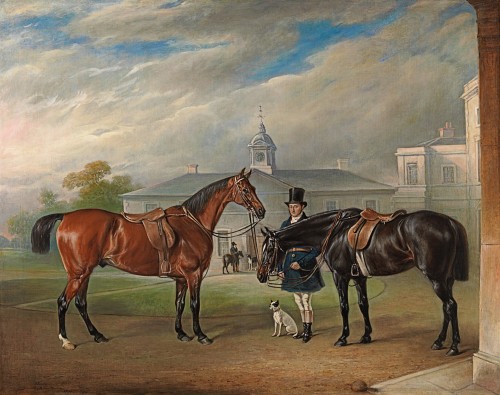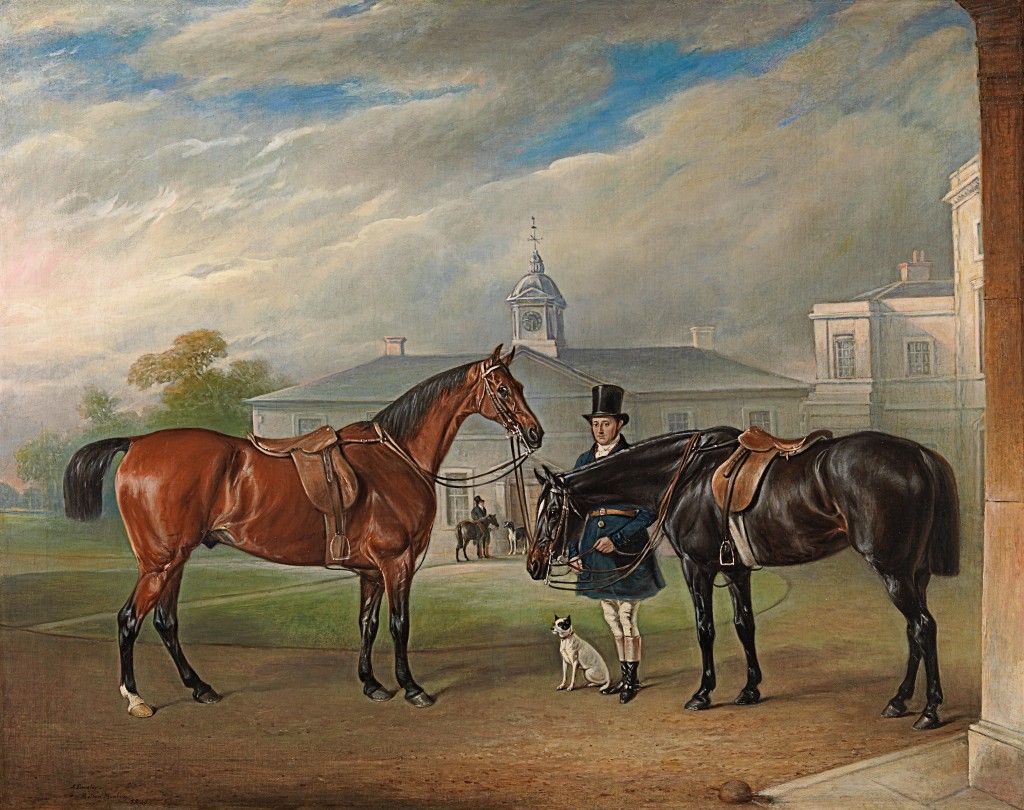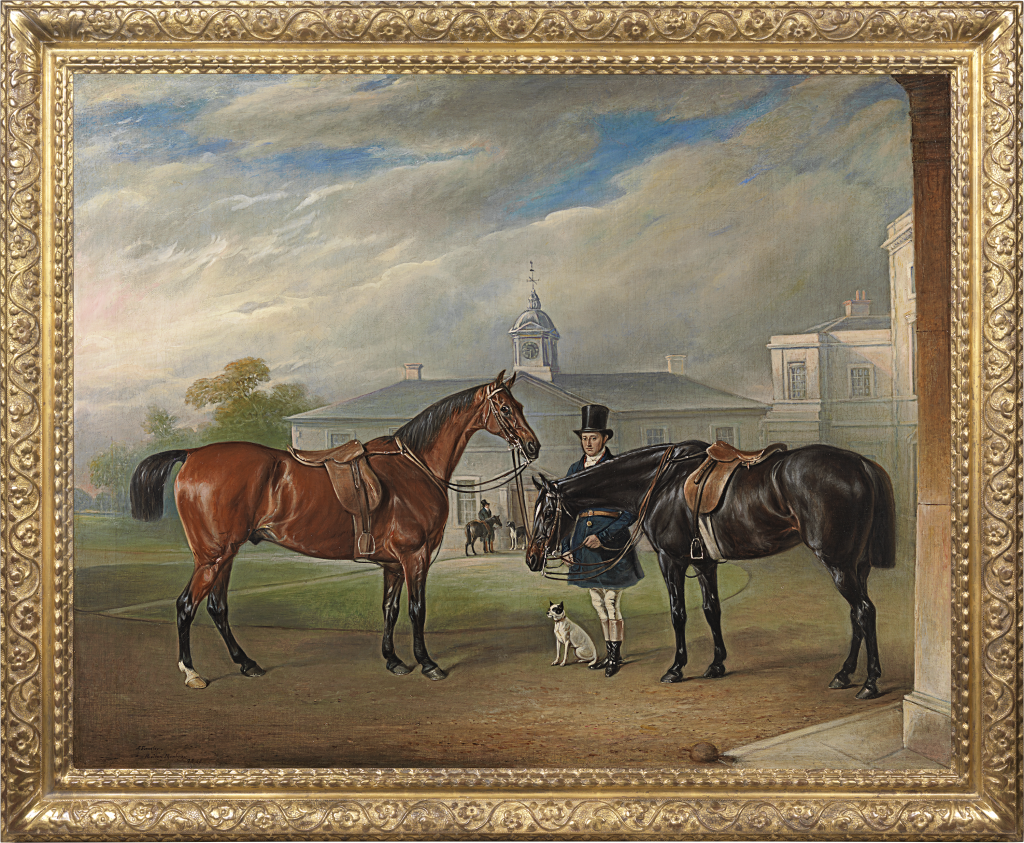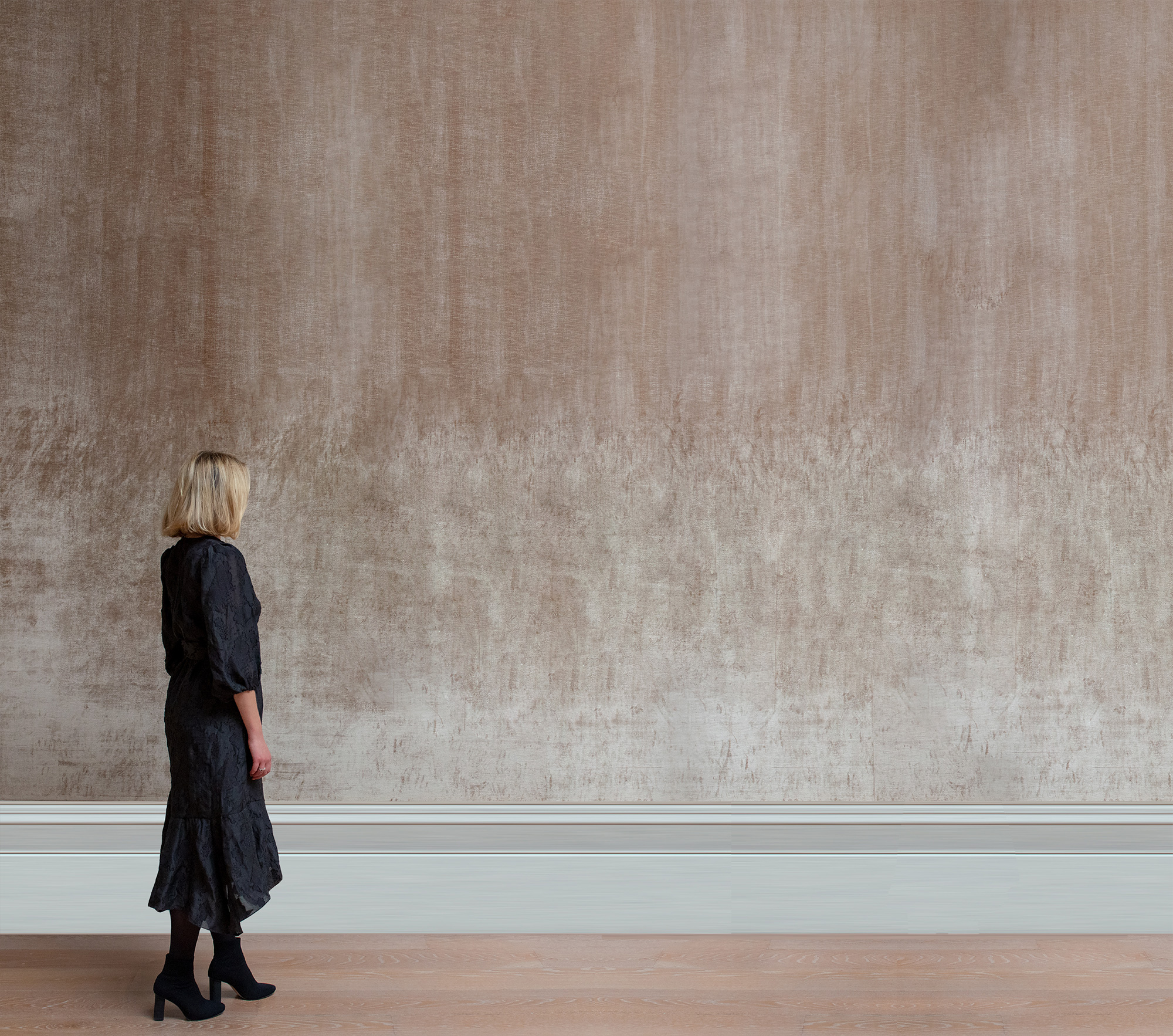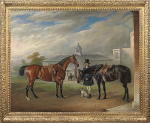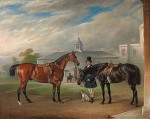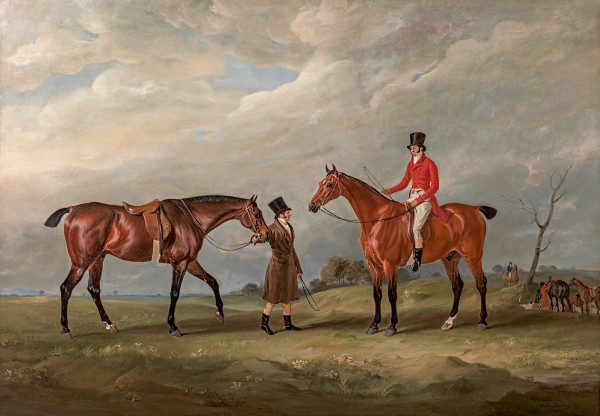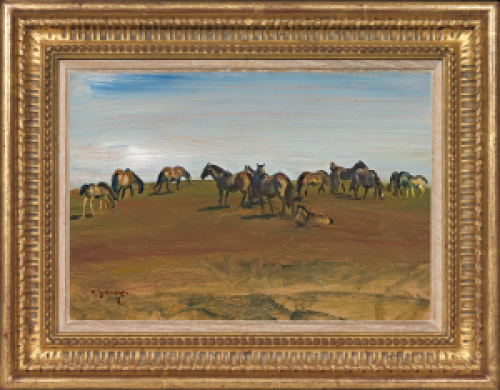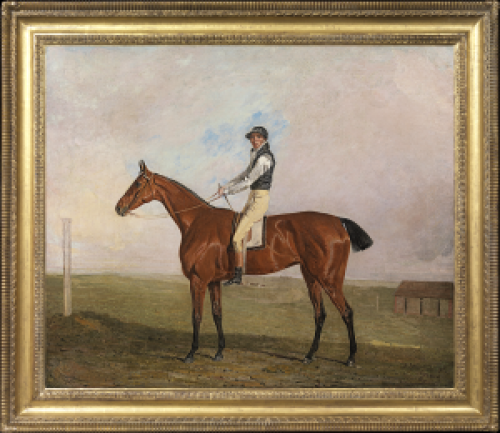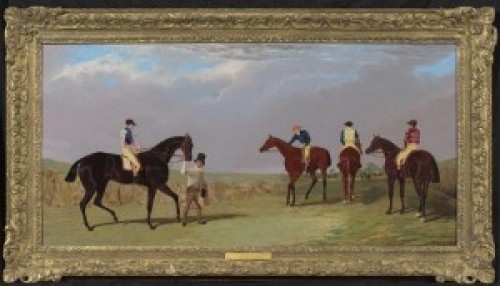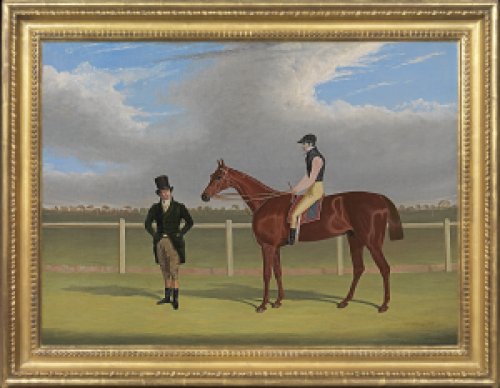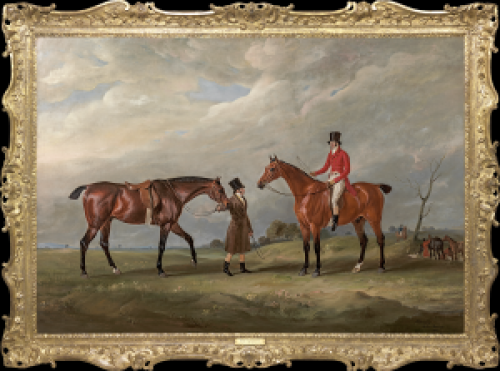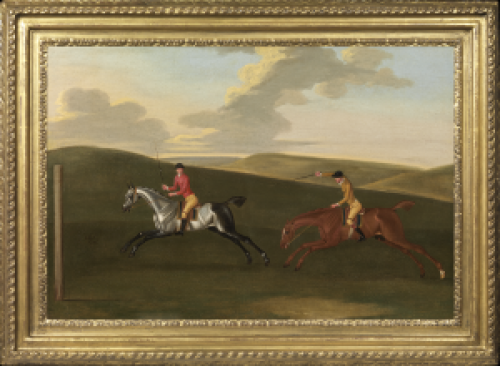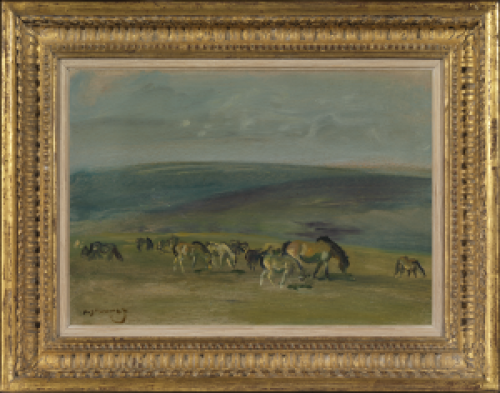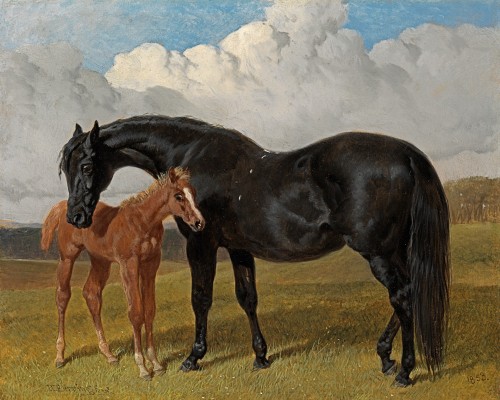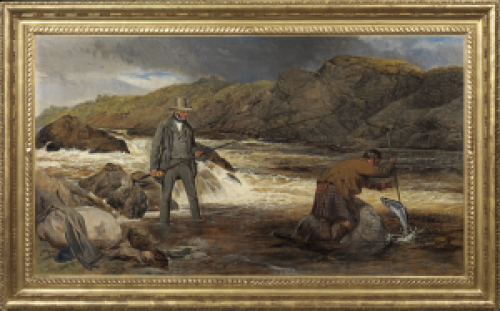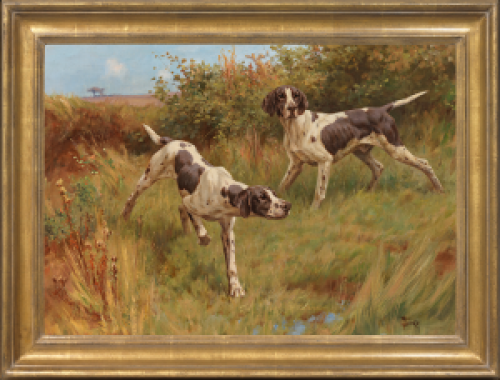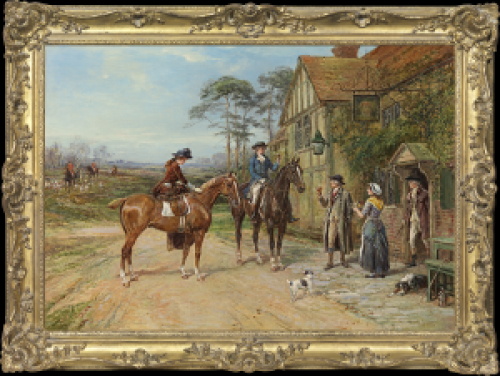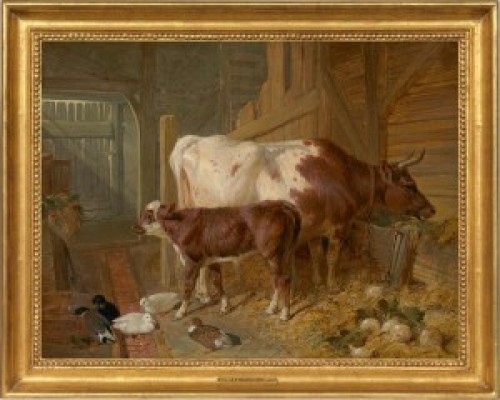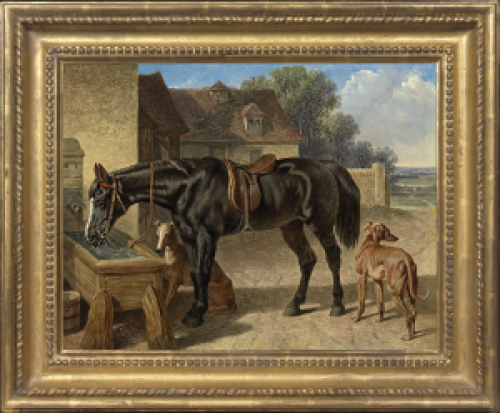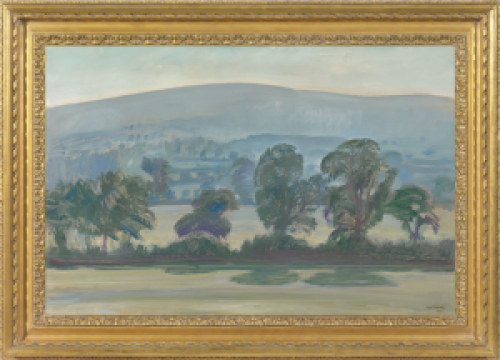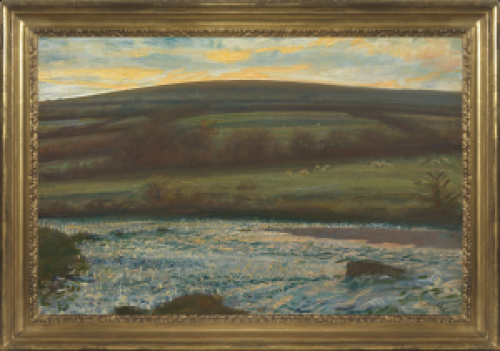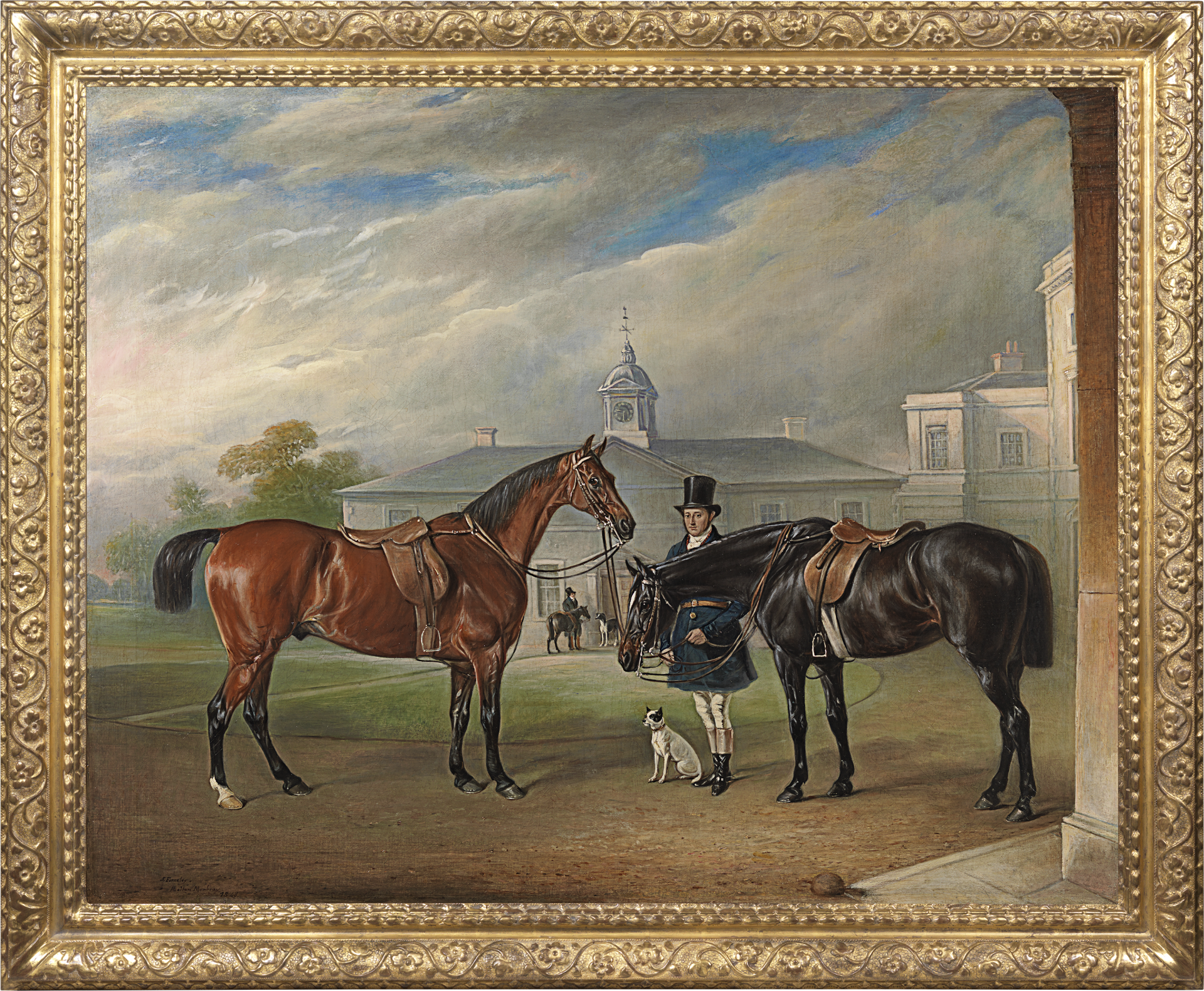JOHN FERNELEY SNR
Thrussington 1782 - 1860 Melton Mowbray
Ref: CB 168
Sir John Thorold’s hnter with a groom at Syston Park, Lincolnshire
Signed, inscribed and dated lower left: J. Ferneley / Melton Mowbray / 1848
Oil on canvas: 41 ½ x 52 ½ in / 105.4 x 133.4 cm
Frame size: 48 ½ x 59 ½ in / 123.2 x 151.1 cm
In an eighteenth century style carved and gilded running pattern frame
Provenance:
Commissioned by Sir John Charles Thorold, 11th Bt. (1816-1866) of Syston Park, Grantham, Lincolnshire;
by descent
Literature:
Major Guy Paget, The Melton Mowbray of John Ferneley/The Account Books of John Ferneley, 1931, p.151, no.599 (‘Sir John Thorold, Syston Park. Oct., 1848. Portraits of Two Horses with Groom and Dog. £26.5.0’)
Robert Fountain, John Ferneley (1782-1860) Catalogue of Paintings, p.63, British Sporting Art Trust reference no.G.48.599.001 (‘Two horses, groom and dog outside Syston Park’; online at bsat.co.uk)
Sir John Thorold, 11th Bt. (1816-1866) descended from a family which had come to England with William the Conqueror. He inherited the 25,000-acre estate at Syston Park near Grantham in Lincolnshire from his father Sir John Hayford Thorold, 10th Bt., a noted bibliophile and manuscripts collector. The 11th Baronet had different interests. He enjoyed frequent trips to Paris, where he had an apartment, and lived a lavish lifestyle which included ownership of fine carriages, hacks and hunters. To the family collection of Old Masters and portraits by van Dyck and Reynolds, Sir John added several commissions from John Ferneley Snr. Apart from the present work, they included Sir John Thorold’s horses at Syston, 1843[1], Sir John Thorold’s bay hunters with their groom in a stable, 1848[2] and Lady Thorold’s hunter and Shetland pony with a groom[3] (all private collections)[4].
This painting depicts one of Sir John’s treasured bay hunters with a groom in smart, dark blue livery with another horse and a dog. They stand outside the elegant stable block at Syston which is at right angles to the main, Palladian house, built by John Langwith for Sir John Thorold, 9th Bt. (1734-1815) in 1766-75. This can be glimpsed to the far right of Ferneley’s painting, its white front catching a gleam of sunlight. In the distance, by the door to the stable block, is another groom holding a pony, probably belonging to one of Sir John’s six children, with a hound by its side. As always, Ferneley pays exquisite attention to the personalities and physiognomy of the animals and men, placing them beneath a vivid sky of scudding clouds.
Syston is situated in prime Midlands hunting country. Sir John hunted with the Belvoir and no doubt with other famous Hunts such as the Quorn. The mid-nineteenth century was a golden age for hunting, with boisterous parties of gentleman meeting at the hunting capital of Melton Mowbray and large fields pursuing the fox at ‘splittercockation pace’ over undulating terrain and fiendish fences. Being a fine horseman was not just a point of honour for the upper classes but a necessity in the days when Army officers spent much of their time on horseback. Hunting also influenced the development of jump racing. The first steeplechase, held in 1752, was simply that: two Irishmen raced four miles across country from St John’s, Buttevant to St Mary’s at Doneraile in Cork for a wager.
Syston Park was demolished in 1928 and its contents, including this Ferneley, moved to nearby Marston Hall, a property owned by the Thorolds since 1380. It has descended in the family.
JOHN FERNELEY SNR
Thrussington 1782 - 1860 Melton Mowbray
One of the most accomplished sporting artists of his day, John Ferneley Snr had a long and prolific career, and enjoyed considerable fame and fortune during his lifetime. Born at Thrussington in Leicestershire, fifteen miles from Belvoir Castle, the son of a wheelwright, Ferneley was first apprenticed to his father’s trade. His artistic talent was recognised by the young Henry Manners, 5th Duke of Rutland (1778-1857), who admired some of his pictures adorning a cart on which his father was working. In 1801, at the instigation of the Duke, Ferneley was sent to London to study with the successful Leicestershire-born sporting painter Benjamin Marshall (1768-1835). Ferneley was supposed to enrol at the Royal Academy Schools, but never attended.
From 1804, Ferneley travelled extensively around England, visiting Dover (to paint the Leicestershire Yeomanry under the Duke’s patronage), Norfolk and Lincoln. He painted Thomas Assheton Smith (1776-1856), from 1806 Master of the Quorn, in whose country Thrussington lay. In 1809 he went to Ireland, returning in 1810 and 1812, painting many pictures for the Irish gentry.
Ferneley married Sarah (Sally) Kettle in 1809; by 1811 he was earning over £200 a year. In 1814 he built a studio and house named Elgin Lodge at Melton Mowbray in Leicestershire, the town known as ‘the Queen of the Shires’ at the confluence of four famous hunts: the Quorn, the Cottesmore, the Belvoir and the South Nottinghamshire. His reputation earned him the patronage and friendship of many Meltonians and members of the aristocracy. He was commissioned by some of the most fashionable figures of the day, including Beau Brummel and Count d’Orsay. Ferneley was an enthusiastic practitioner of the field sports which he painted, keeping his own hunter and enjoying fishing, shooting, stalking and yachting. In 1810 he increased his charge for painting a single horse from five guineas to ten, keeping this rate for the rest of his career. Ferneley painted racing, shooting, stalking, horse and cattle fairs and portraits of dogs and farm animals. He is most celebrated, however, for hunting portraits. His immaculately turned-out gentlemen and elegant mounts epitomize the era of reckless bravery and high fashion on the hunting field. He excelled at the ‘hunt scurry’, panoramic works which depict ‘a number of identifiable riders galloping at splittercokation pace across the large, recently enclosed, pastures of the Midlands’[5].
Ferneley made annual visits to London and periodic visits to Scotland, Yorkshire and elsewhere in England. He exhibited at the Royal Academy between 1806 and 1853, as well as at the British Institution and Suffolk Street. Three of his children, Sarah (1811-1903), a watercolourist, John Jnr (1814-1862) and Claude Lorraine (1822-1891) became artists. He also taught Sir Francis Grant (1803-1878). John Ferneley Snr died in Melton Mowbray in 1860.
The work of John Ferneley Snr is represented in Leicester Art Gallery; Burghley House, Lincolnshire; Tate Britain, London; the Walker Art Gallery, Liverpool and the Yale Center for British Art, New Haven, CT.
[1] Sotheby’s London, 14th June 2001, lot 19.
[2] Sotheby’s London, 13th June 2002, lot 16.
[3] Sotheby’s New York, 3rd June 1994, lot 685.
[4] We are very grateful to John and Liz Thorold for biographical details about Sir John Thorold, 11th Bt.
[5] Robert Fountain, ‘Ferneley, John (1782-1860), Oxford Dictionary of National Biography, Oxford 2004.

